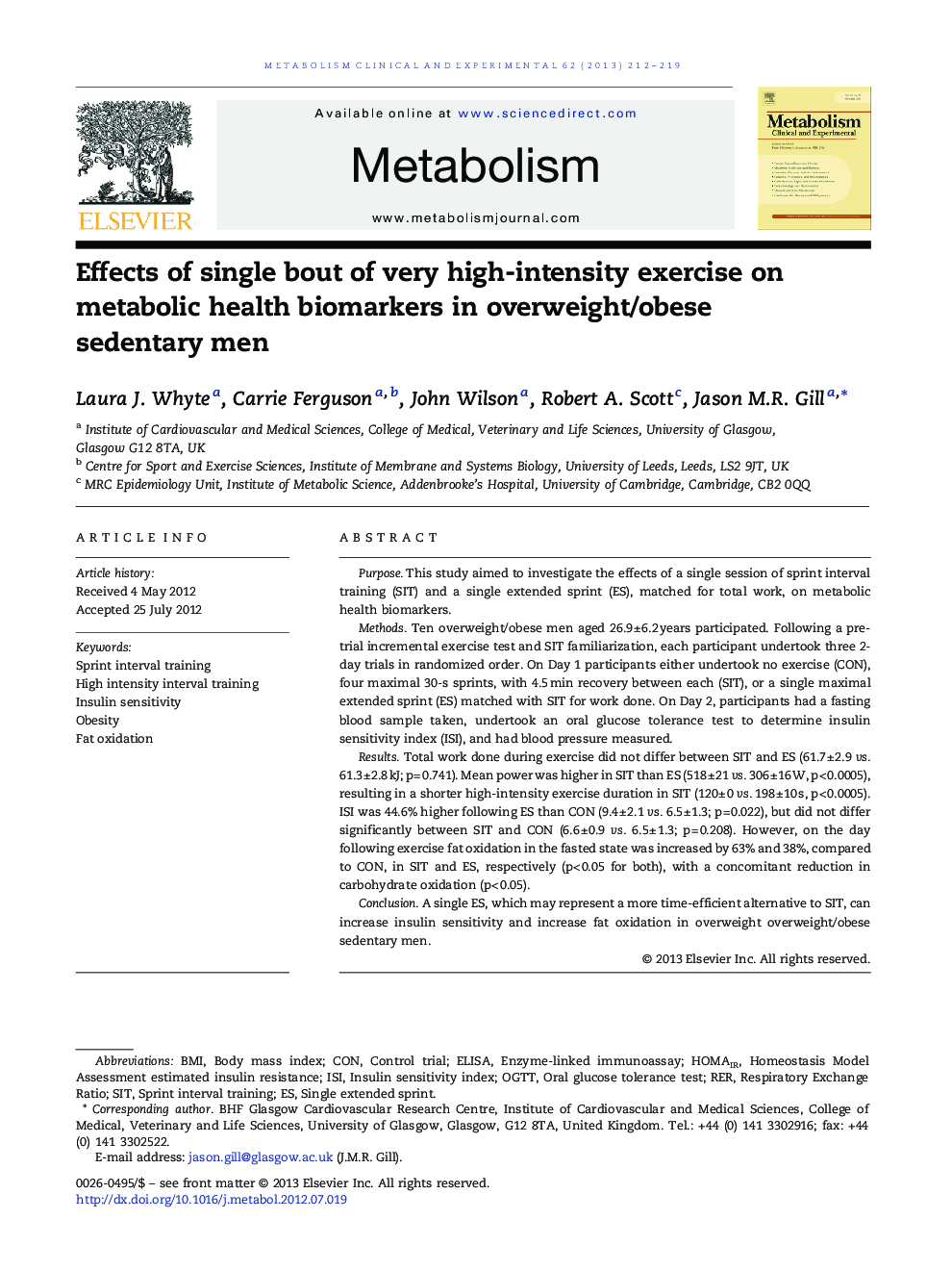| کد مقاله | کد نشریه | سال انتشار | مقاله انگلیسی | نسخه تمام متن |
|---|---|---|---|---|
| 2806129 | 1157099 | 2013 | 8 صفحه PDF | دانلود رایگان |

PurposeThis study aimed to investigate the effects of a single session of sprint interval training (SIT) and a single extended sprint (ES), matched for total work, on metabolic health biomarkers.MethodsTen overweight/obese men aged 26.9 ± 6.2 years participated. Following a pre-trial incremental exercise test and SIT familiarization, each participant undertook three 2-day trials in randomized order. On Day 1 participants either undertook no exercise (CON), four maximal 30-s sprints, with 4.5 min recovery between each (SIT), or a single maximal extended sprint (ES) matched with SIT for work done. On Day 2, participants had a fasting blood sample taken, undertook an oral glucose tolerance test to determine insulin sensitivity index (ISI), and had blood pressure measured.ResultsTotal work done during exercise did not differ between SIT and ES (61.7 ± 2.9 vs. 61.3 ± 2.8 kJ; p = 0.741). Mean power was higher in SIT than ES (518 ± 21 vs. 306 ± 16 W, p < 0.0005), resulting in a shorter high-intensity exercise duration in SIT (120 ± 0 vs. 198 ± 10 s, p < 0.0005). ISI was 44.6% higher following ES than CON (9.4 ± 2.1 vs. 6.5 ± 1.3; p = 0.022), but did not differ significantly between SIT and CON (6.6 ± 0.9 vs. 6.5 ± 1.3; p = 0.208). However, on the day following exercise fat oxidation in the fasted state was increased by 63% and 38%, compared to CON, in SIT and ES, respectively (p < 0.05 for both), with a concomitant reduction in carbohydrate oxidation (p < 0.05).ConclusionA single ES, which may represent a more time-efficient alternative to SIT, can increase insulin sensitivity and increase fat oxidation in overweight overweight/obese sedentary men.
Journal: Metabolism - Volume 62, Issue 2, February 2013, Pages 212–219